When youth hockey players enter your association, they — and their parents — are entrusting your program and its coaches to develop their skills so they can eventually progress to high school, college, or maybe even professional teams. To ensure they can achieve these skills and advance their game, it is important to establish player development plans.
These plans should include curriculum per age group on how to develop on-ice skills, off-ice training, knowledge of the game, and character development.
On-Ice Skills
The heart of a club’s player development plan is an on-ice curriculum. Organizations need to determine which skills players will focus on at each age level. According to USA Hockey, these skills can be categorized by:
- Skating
- Puck control
- Passing and receiving
- Shooting
- Body contact
- Goaltending
Skating
For skating skills, USA Hockey suggests players under 8 years old focus on getting into the ready position, working on edge control, taking a forward stride, making a controlled stop, turning, performing a forward crossover, learning backward skating, making a backward stop, and other skills.
Each older age level should build on these skills, with 10-and-under players adding one-foot stops and backward crossovers, for example. Then, 12-year-olds can add lateral skating, backward cross-under starts, backward two-skate stops, and backward power stops.
Puck Control
When developing puck control skills, USA Hockey recommends having 8-year-old athletes focus on lateral stickhandling, front-to-back stickhandling, diagonal stickhandling, and attacking the triangle. At 10 years old, players should add puck protection, change of pace, toe drag, give-and-take, and accelerating with the puck to their skills’ list. Twelve-year-old players’ skills would include change of direction, backward puck control, fakes, and handling the puck off the boards.
Passing and Receiving
For passing and receiving skills, an 8-and-under player should focus on forehand and backhand passes and receiving a pass properly with the stick, USA Hockey suggests. Saucer passes, receiving a pass properly with the skate and indirect passes should be added for players 10-and-under. Twelve-year-old players should focus on receiving a pass properly with the hand, surrounding the puck, one-touch passes, and area passes.
Shooting
Players should start with basic shooting skills, focusing on wrist shots and backhand shots for players 8 years old and younger, USA Hockey suggests. At 10 years old, players can add flip shots, screen shots, deflections, and off-rebound shots to their skill development list. Players 12-and-under should add snap shots, slap shots, and fake shots.
Body Contact
When learning body contact skills, players 8-and-under should focus on stick-on-puck and stick lifts, USA Hockey recommends. At 10 years old, players should add poke checks, gap control concepts, and body positioning and angling to their skillsets. Athletes’ 12-and-under should also focus on stick press and receiving body contact.
Goaltending
USA Hockey recommends athletes start focusing on goalie skills at around 10 years old. The organization suggests not identifying full-time goaltenders until that age so that younger players can spend time developing all hockey skills. Then, at the 10-and-under level, athletes can work on their stances, angling, moving forwards, backward and laterally, and making saves with their stick, gloves, body, and pads. At 12 years old, players can add cradling, rebound control, screen shots, walkouts, and wraparounds to their skills.
Off-Ice Training
While player development plans may emphasize on-ice skills, it is also important to enhance athletes’ off-ice nutrition knowledge and fitness training. Clubs can work on developing players’ fitness through on-ice conditioning and dryland training. Organizations should focus on exercises that help enhance athletes’ balance, agility, coordination, explosiveness, and core strength.
Clubs should also teach players the basics of nutrition and encourage them to consume plenty of water and eat a well-balanced diet.
Understanding of the Game
For players to be successful on the ice, they need to understand the game and its rules. Clubs should include a curriculum for each age level that teaches players the rules, team concepts, and safety.
- Rules: Players need to know the rules of the game, including understanding face-offs, body contact, offsides, icing and checking from behind, and more, depending on the age and experience level of the players.
- Penalties: Make sure athletes are taught what results in a penalty and what types of penalties can be assessed.
- Team Concepts: While it is important for players to enhance their skills, development plans should also include team concepts like defensive situations and offensive scenarios such as 2-1, power plays, and more.
- Safety: Keeping players safe should always be a priority. Clubs should include safety tips regarding equipment, on-ice behavior, and other risks in the curriculum for all ages and levels.
Character Development and Life Skills
Associations should emphasize the importance of developing life skills in addition to hockey skills in their player development plans. This can include working on sportsmanship and character development with athletes. Focusing on these can ensure players are learning life skills that they can use on future teams, in future careers, and in the community.
About TeamGenius
TeamGenius is a youth hockey player evaluation and development mobile app + website to help youth hockey association staff and board members complete annual player evaluations & also aid in the athlete development process.

